Surfing was once banned in Hawaii. Today, you can shape a surfboard like Hawaiian royalty.
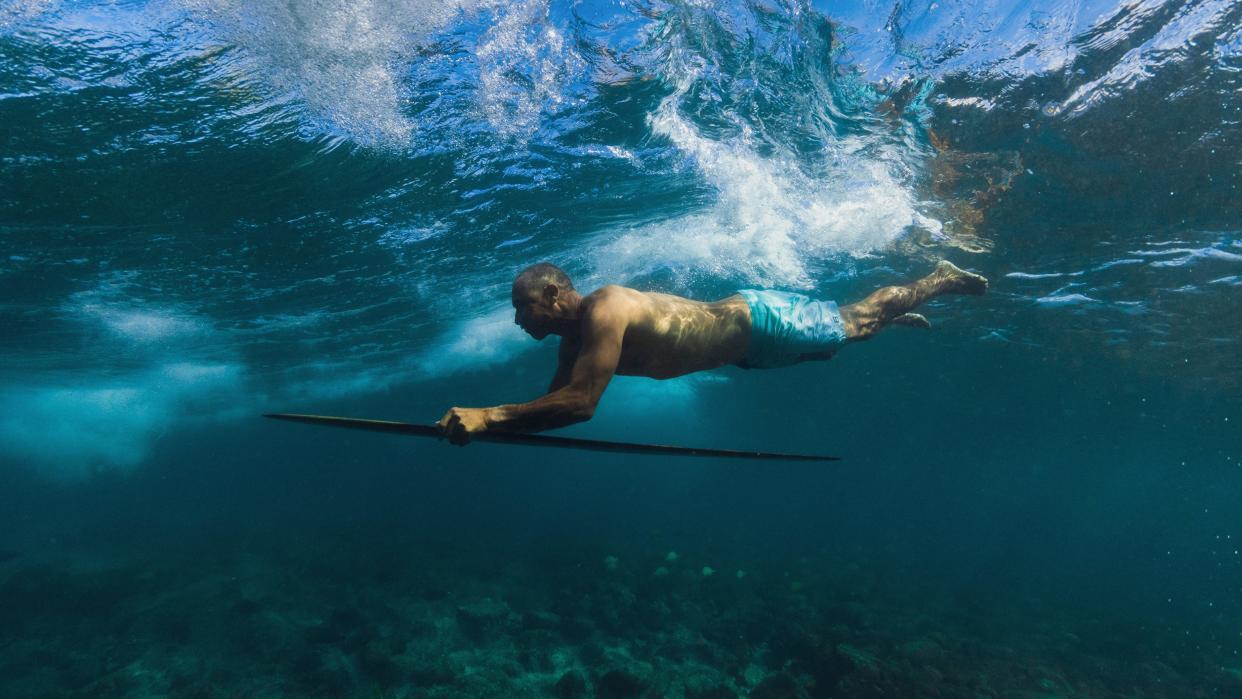
The art of playing in harmony with the ocean is something Native Hawaiians have done for centuries.
It’s called surfing nowadays, but the ancient Hawaiians said he’e nalu, or “wave sliding.”
It was another way Native Hawaiians connected with the ocean, a place of cultural and spiritual significance, as well as what many depended on for their livelihoods. From fishing to canoeing, the ocean was the epicenter of ancient Hawaiian culture.
The ancient surfboards of Hawaiian royalty, or alii, differed greatly from the 7-pound shortboards made of foam, resin and epoxy in the water today. In fact, a regular surfer probably couldn’t even carry one of their surfboards on their own. Surfboards were sometimes made of solid wood like koa, stood over 20 feet long and weighed about 150 pounds.
It’s an addicting, euphoric feeling to glide along a wave. It’s no wonder the sport has exploded in popularity, with some surf breaks in Australia reportedly seeing more than double the amount of people in the water.
Over the past decade, the number of surfers in the U.S. has risen by 35%. It’s easy to pop into any surf shop and browse the many board options – even Costco sells factory-made foam boards for beginners.
Some Native Hawaiian surfers are paying tribute to their ancestors by showing people how surfing is more than a sport; it’s a way of life in Hawaiian culture. Oahu-born and Hawaii Island-living Bonga Perkins is one of them.
Perkins’ life has always revolved around surfing. Growing up near Waikiki Beach, he started surfing professionally at age 18, going on to win two world titles for longboarding in 1996 and 2008.
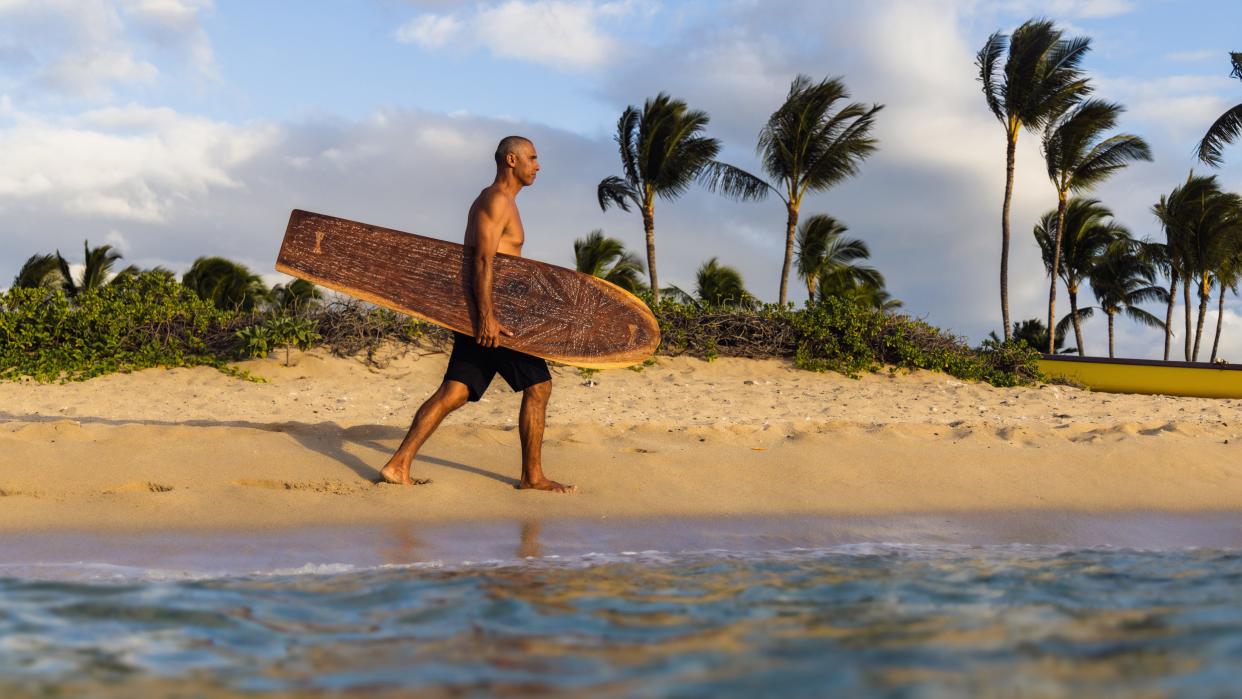
Shaping boards for over 40 years, Perkins offers guests at the Four Seasons Hualalai on Hawaii Island the chance to shape their own wooden surfboard called an alaia, the same kind that Hawaiian kings and queens rode hundreds of years ago. Then, they have the chance to ride the board they created in the water.
“Surfing over the years got a little diluted, so I want to bring understanding the grassroots way, and what other way than to shape and surf your own board?” Perkins said, and through this experience, “people can really appreciate, connect and look at surfing in an entirely different way.”
Surfing was once banned in Hawaii
When the ancient Polynesians migrated to the Hawaiian Islands as far back as 400 A.D., they brought the sport of riding waves.
Oral tradition and surviving ancient surfboards show that by the 1700s, surfing was a major part of daily life for Hawaiians, Bishop Museum historian Desoto Brown told USA TODAY in an email.
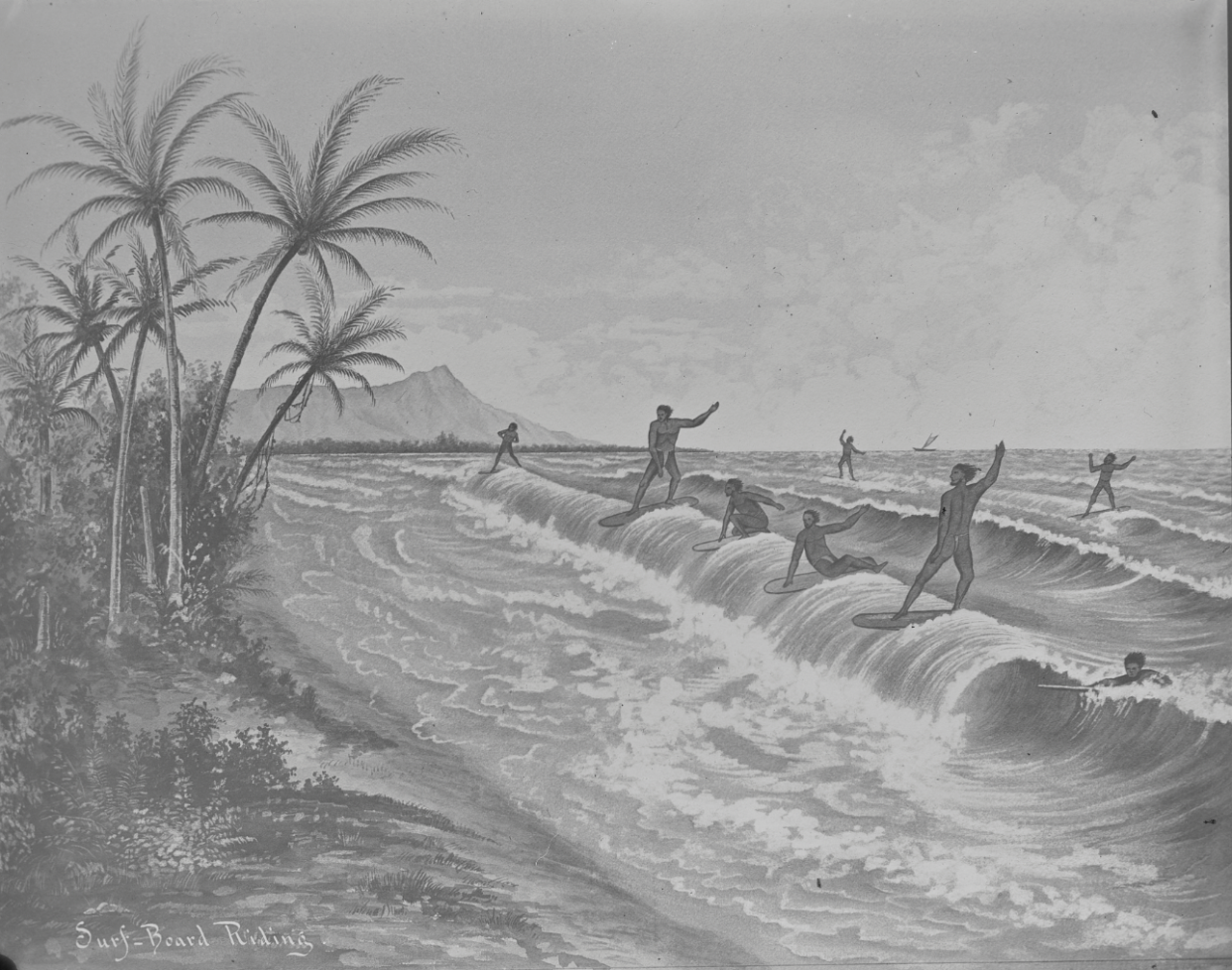
On Hawaii Island are remnants of Kuemanu heiau, an ancient temple where people would pray for good surf conditions back in the day.
Hawaii’s unique geography – its location, varied underwater topography and volcanic origins – create waves and surf breaks that “enticed them into the water,” DeSoto said.
Everyone, from commoners to royalty of all genders, was welcomed in the water, unlike the majority of ancient Hawaiian society, which had a rigid structure as to what people could or couldn’t do.
Just as the world’s best surfers gather on Oahu’s North Shore in wintertime, competitions between royalty from the different islands were held in ancient Hawaii. Instead of a trophy, the prizes included canoes and fishing nets, and of course, clout.
The surfboards that Hawaiians designed were sophisticated, with different styles to handle certain types of waves, just like today.
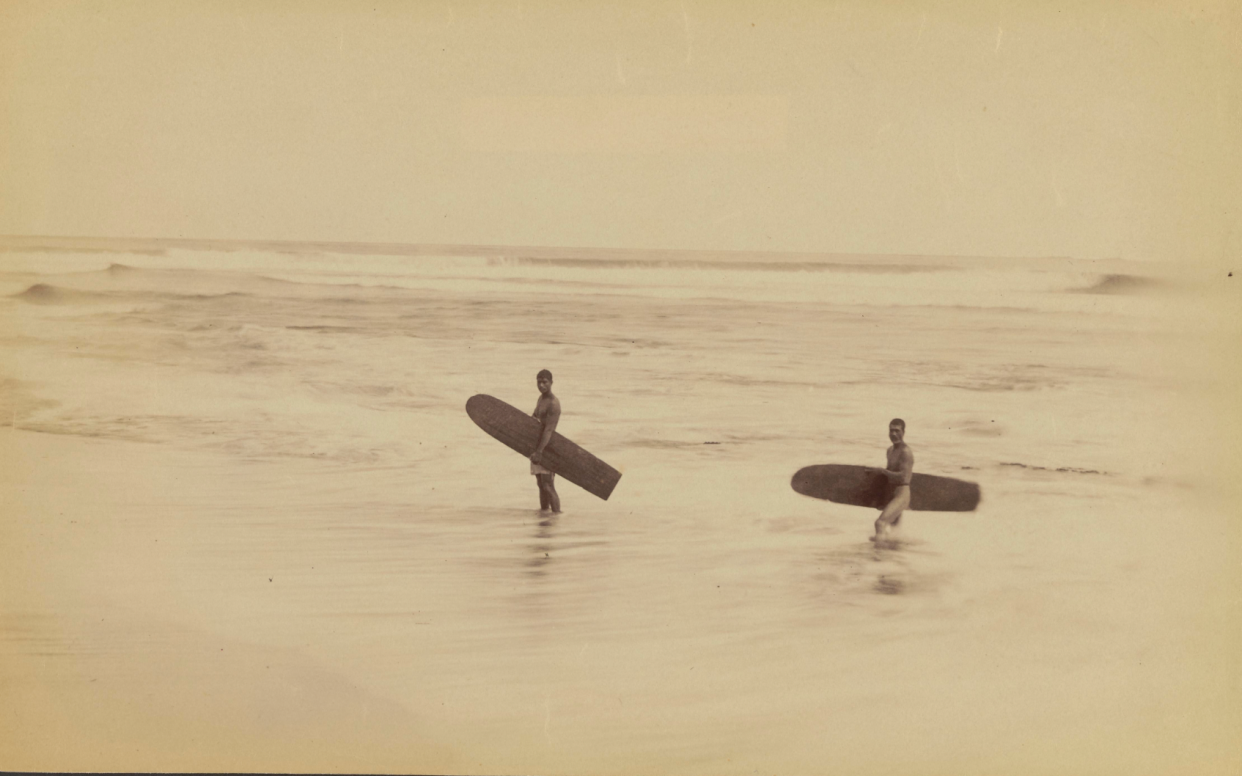
It was a spiritual process to create a surfboard in ancient Hawaii, Perkins said. The boards of the past were cut from indigenous trees like the now-endangered ohia tree, and the species dictated how the board would ride. Some trees are lighter and easier to pivot. The boards were carved with flat stones called aze and stained with a mixture comprising ingredients like ti root and kukui bark ash. Kukui nut oil would gloss it off. There were no fins or leashes like we see today, meaning surfing was putting your life more at risk.
Princess Kaiulani, born in 1875 and who lived through the overthrow of the Hawaiian monarchy, rode a 7-foot and 4-inch board made of koa wood. Her board is kept at the Bishop Museum to this day.
European colonizers who touched down on Hawaiian shores in the late 1700s witnessed surfing for the first time, an activity they called “astonishing.” Missionaries who arrived on the islands disapproved of surfing and sought to end it, as they did with other aspects of Hawaiian culture, such as hula.
A tribute to Queen Lili‘uokalani The only all-Hawaiian entertainment luau in Hawaii tells a dark story
In the 20th century, surfing went through a revival and became more widespread as Hawaii earned its reputation as an idyllic paradise. Olympic swimmer and actor Duke Paoa Kahanamoku helped advertise the adventurous activity to the world, earning himself the nickname “the father of modern surfing.”
From there, only more people have embraced the beauty of surfing.
Surfers can shape their board
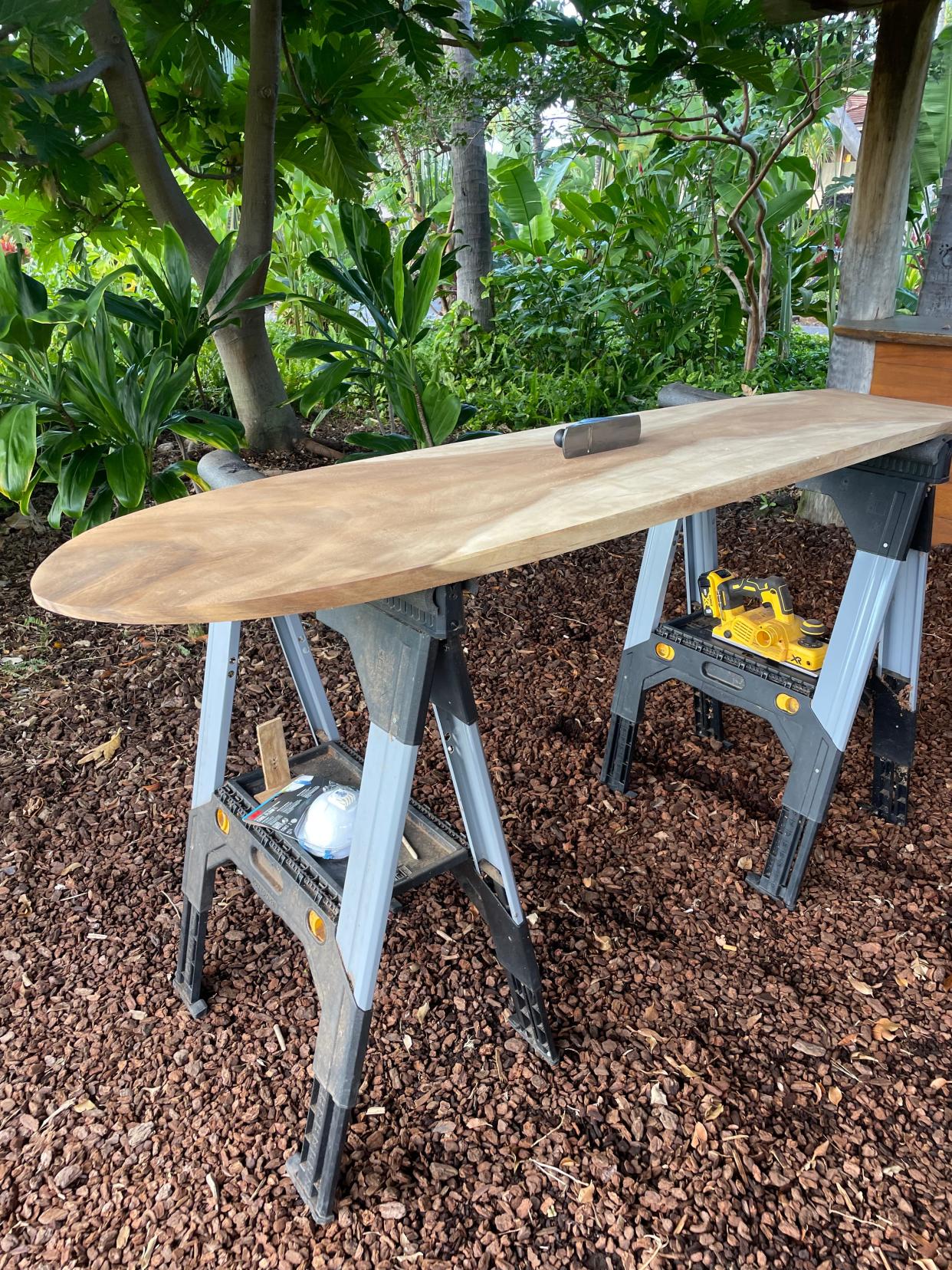
Perkins refined his skill for shaping wooden boards, studying under prominent Native Hawaiian shapers or his kumu (teacher). It’s the same way that hula, tattooing and other indigenous skills are passed down.
At this point, hand-shaping is second nature to Perkins, who can run his hand over the wood and figure out where to carve.
“Everything is about flow,” he said. “You look at a fish; there’s no flat spot on a fish.”
Perkins sources his trees locally from Hawaii Island, and guests can pick between mango or koa wood. For each tree that’s cut down for a board, Perkins plants another on his property in the mountains of Hawaii Island.
To shape the alaia board, which is thin and finless, Perkins will pull out the power tools instead of the traditional carving stones. “We got these things, right, and a couple of power tools where we could crank a board out in a couple of hours rather than a couple of weeks,” he said.
For the two-day, $12,000 experience, guests can take a go with the awl and hand plane to carve out the rails and rocker. Few surfers ever get the chance to leave their own mark on a surfboard. And the result is a one-of-a-kind, handmade item from Hawaii. (Don't worry about fitting the surfboard in a suitcase either, the Four Seasons team will ship it to the guest's home.)
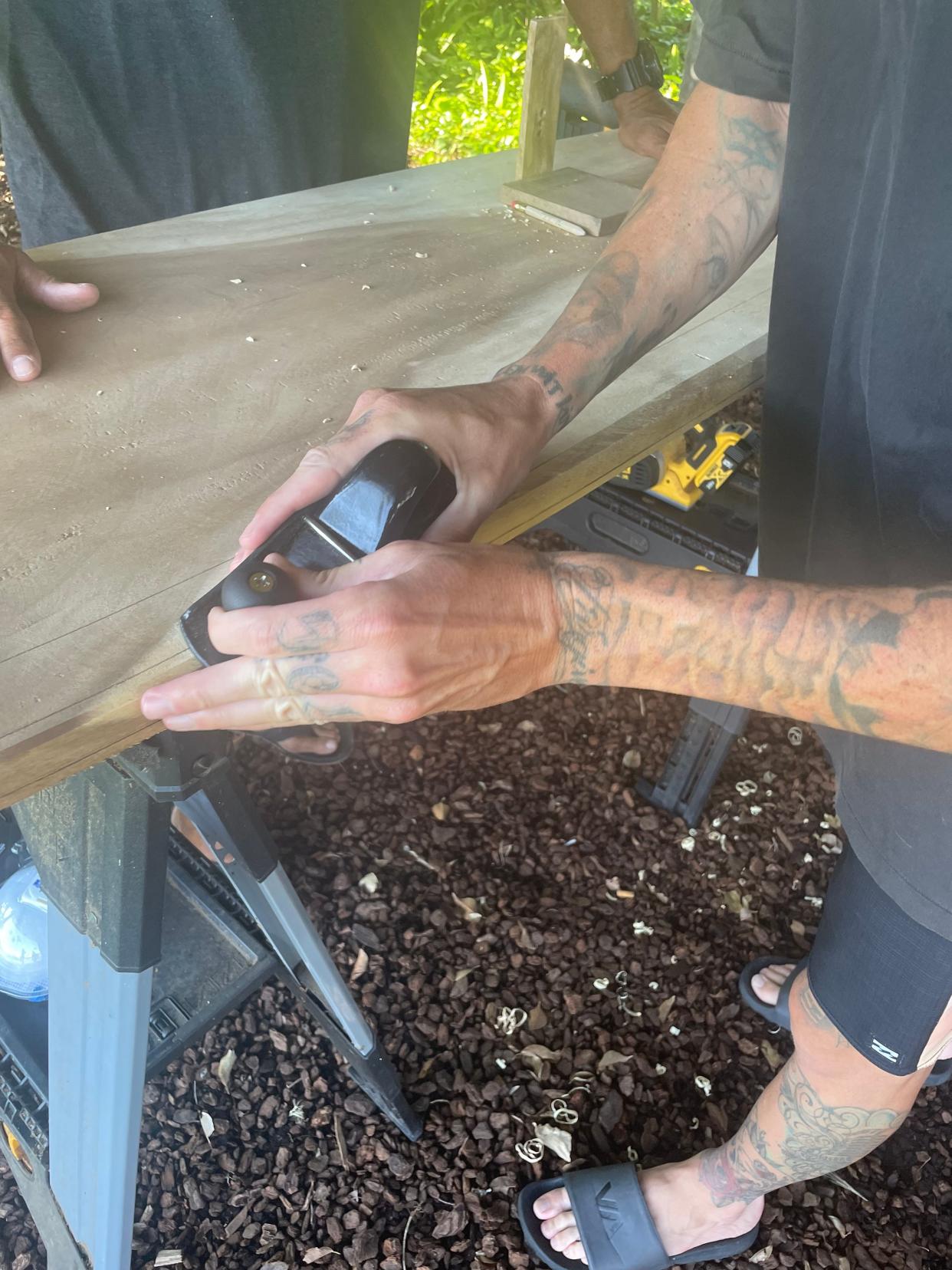
Like his predecessors, Perkins finishes off the board with kukui nut oil.
Then, the utilitarian artwork is ready to get in the water. Perkins can take the guests out to surf on the very board they made to experience how different the ancient boards feel. Modern boards are buoyant compared to the thin and barely there alaia, the surfer is most likely going to struggle at first before gaining a newfound appreciation for surfing.
“There’s a beauty of walking down there, and they used to use these kinds of boards hundreds of years ago,” he said.
Kathleen Wong is a travel reporter for USA TODAY based in Hawaii. You can reach her at kwong@usatoday.com.
This article originally appeared on USA TODAY: This Native Hawaiian surfer helps you make your own ancient surfboard
